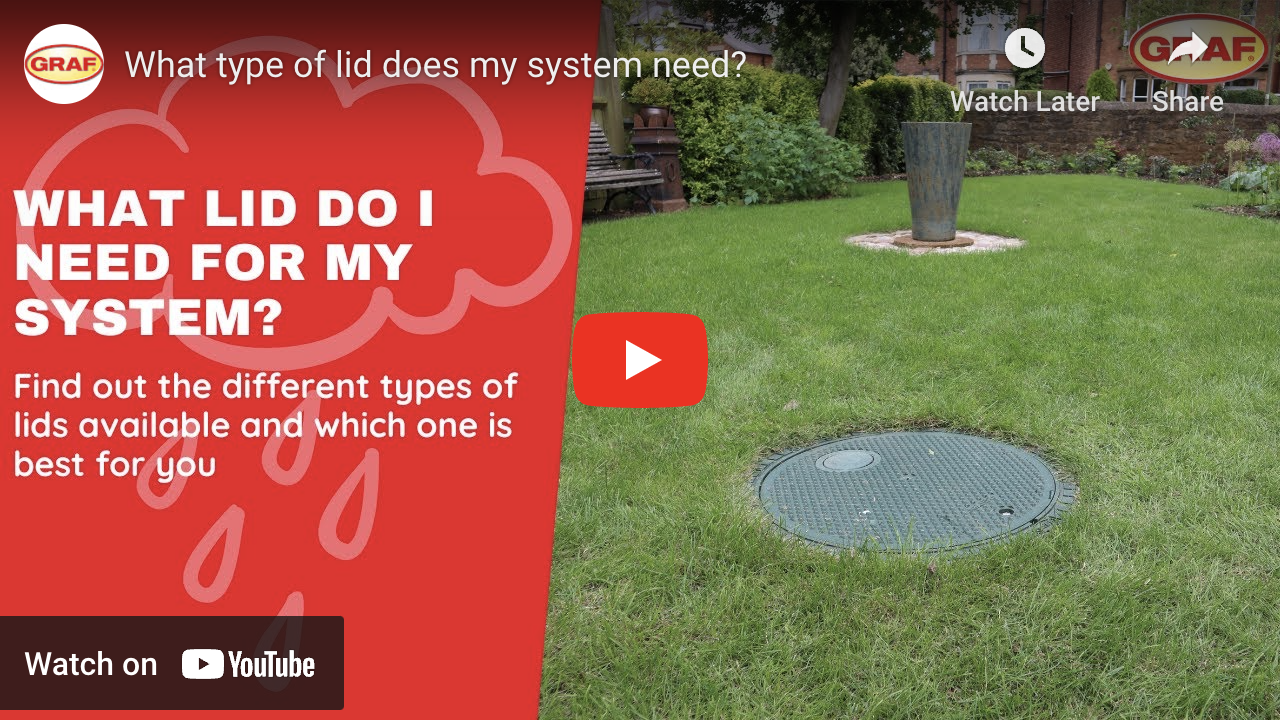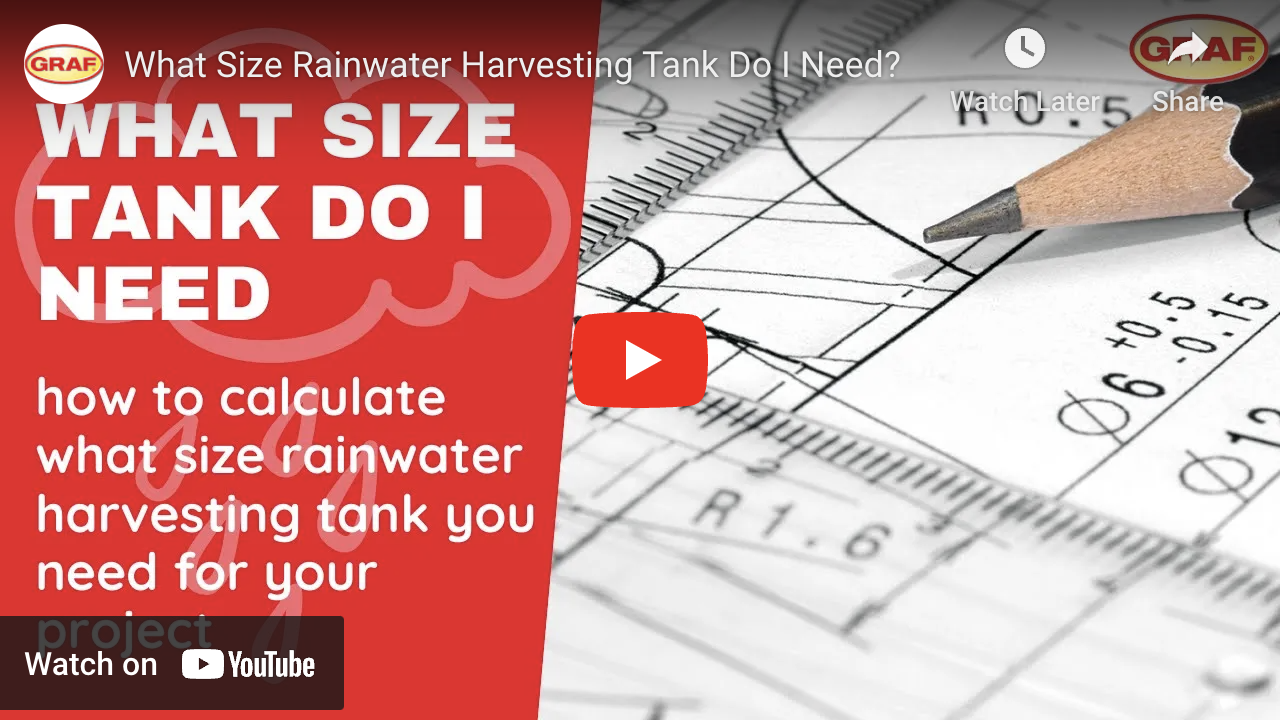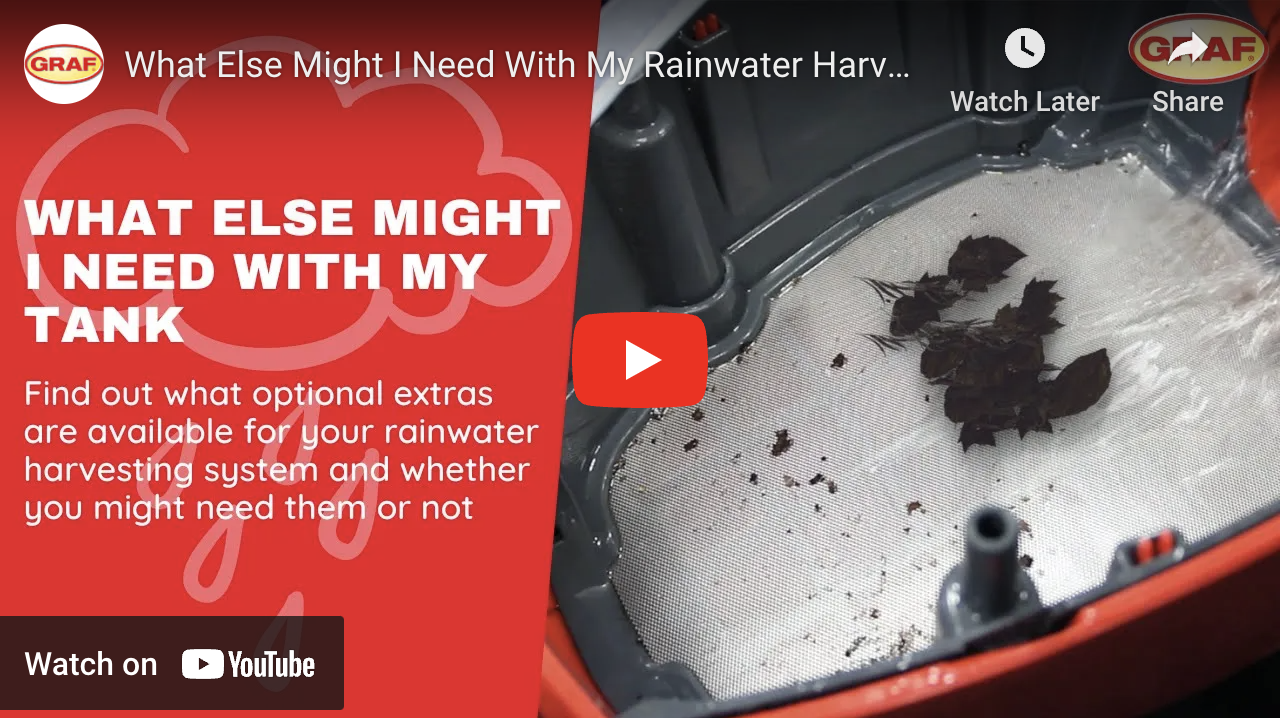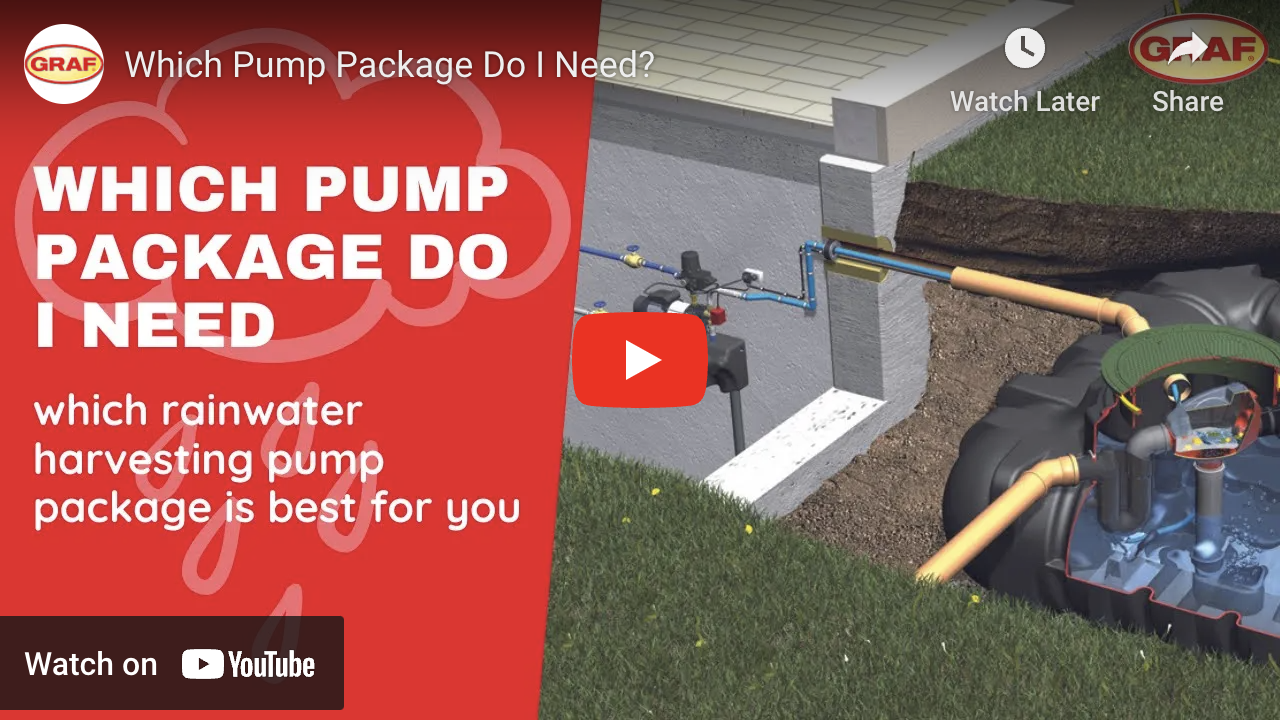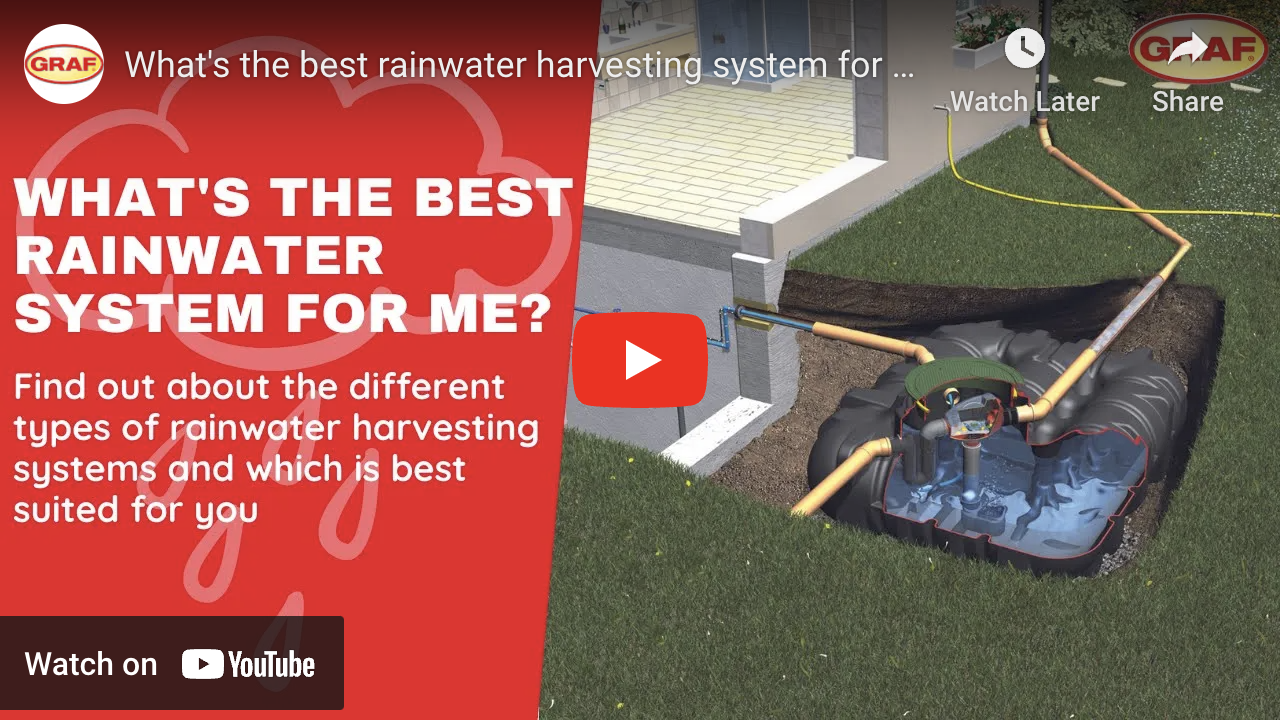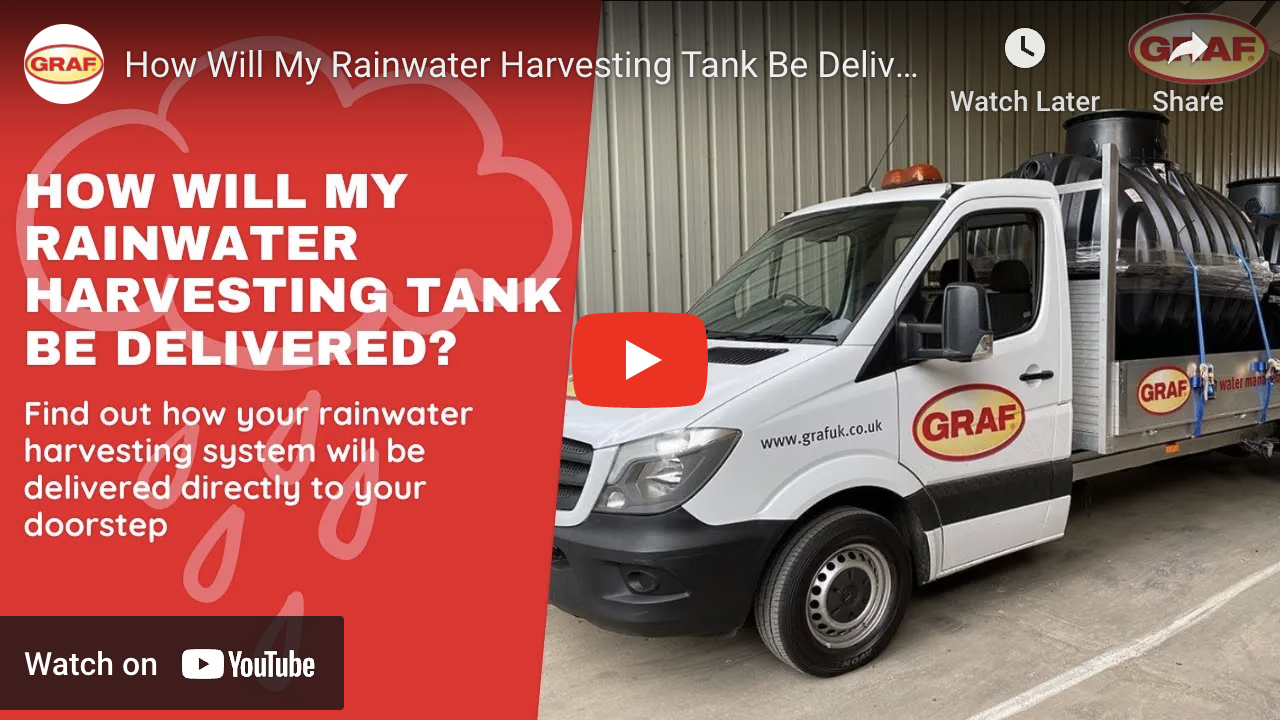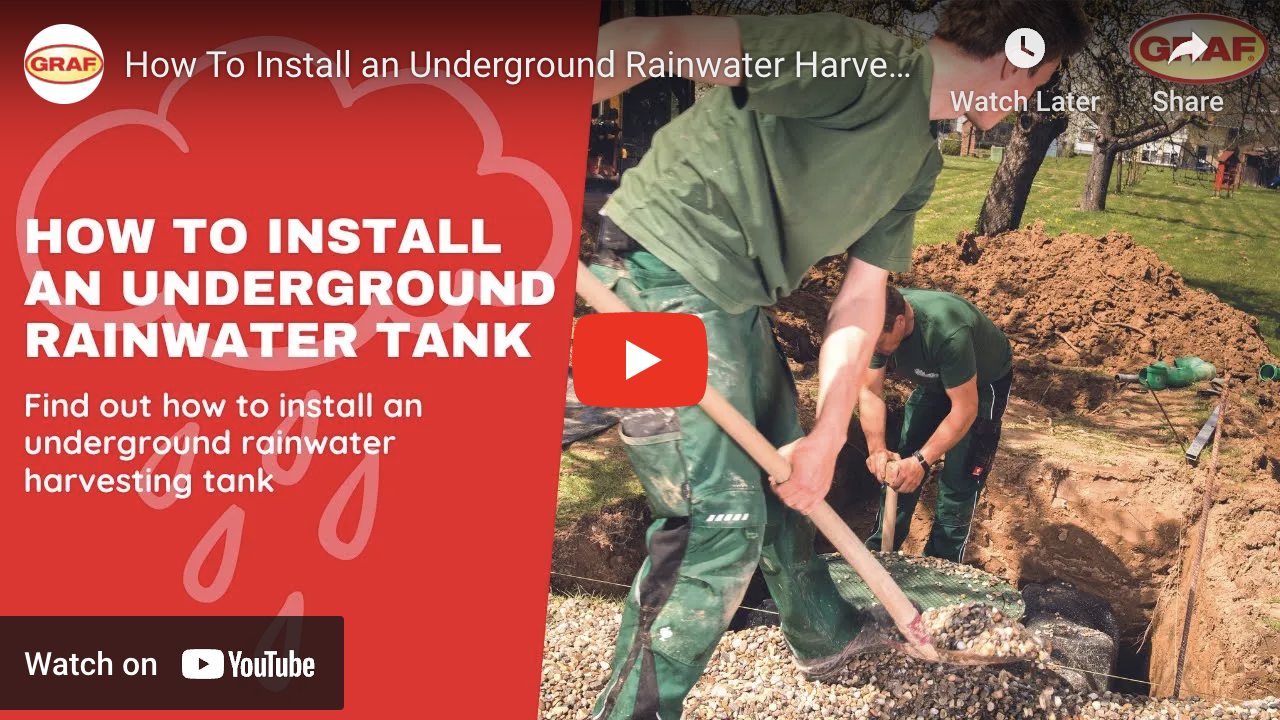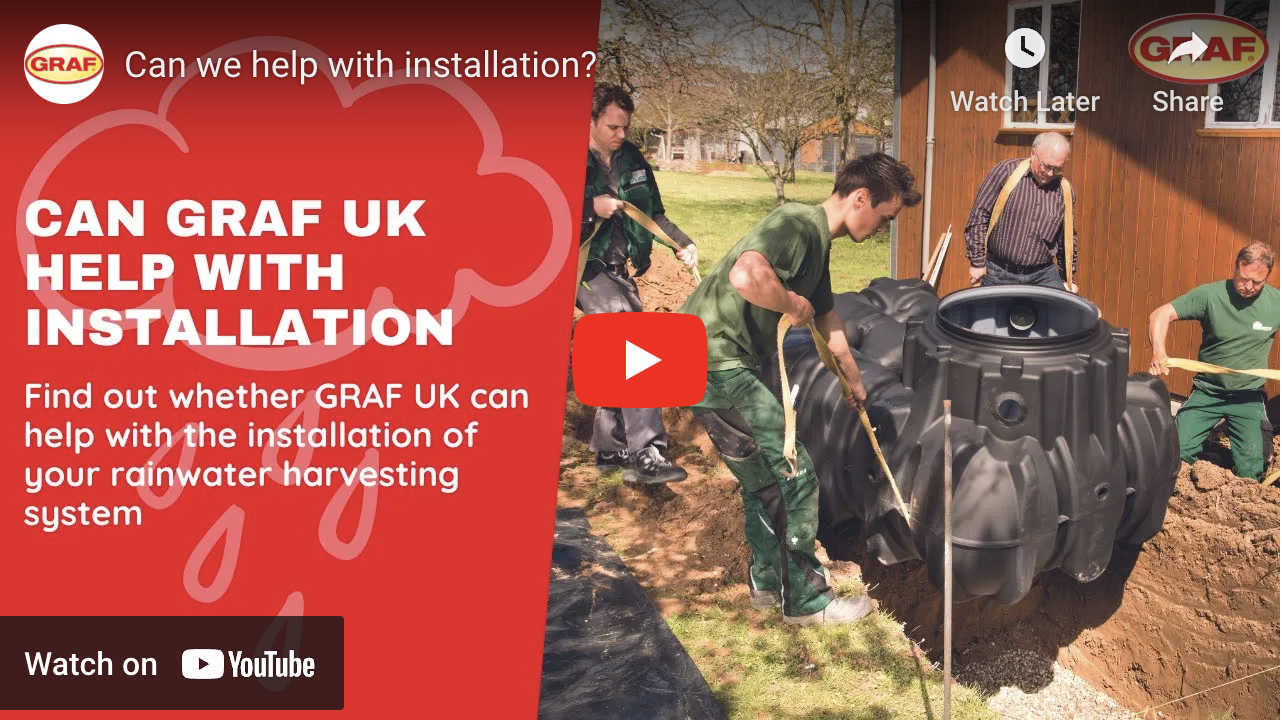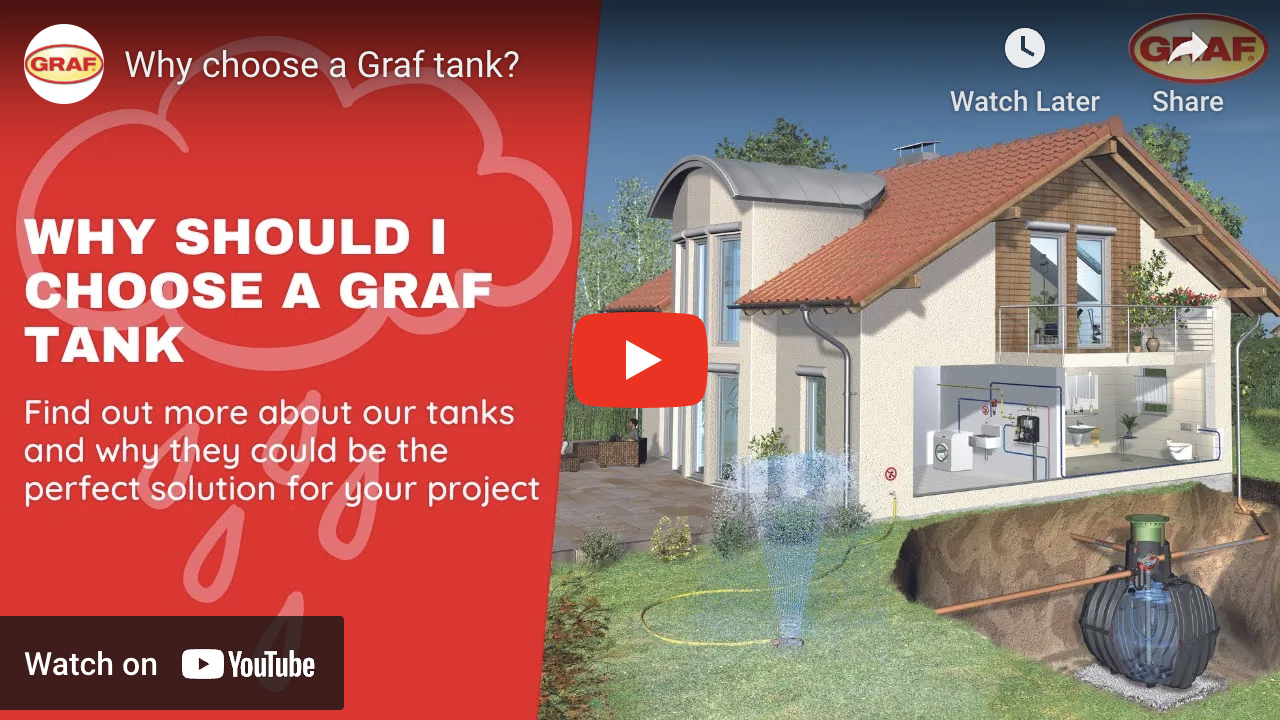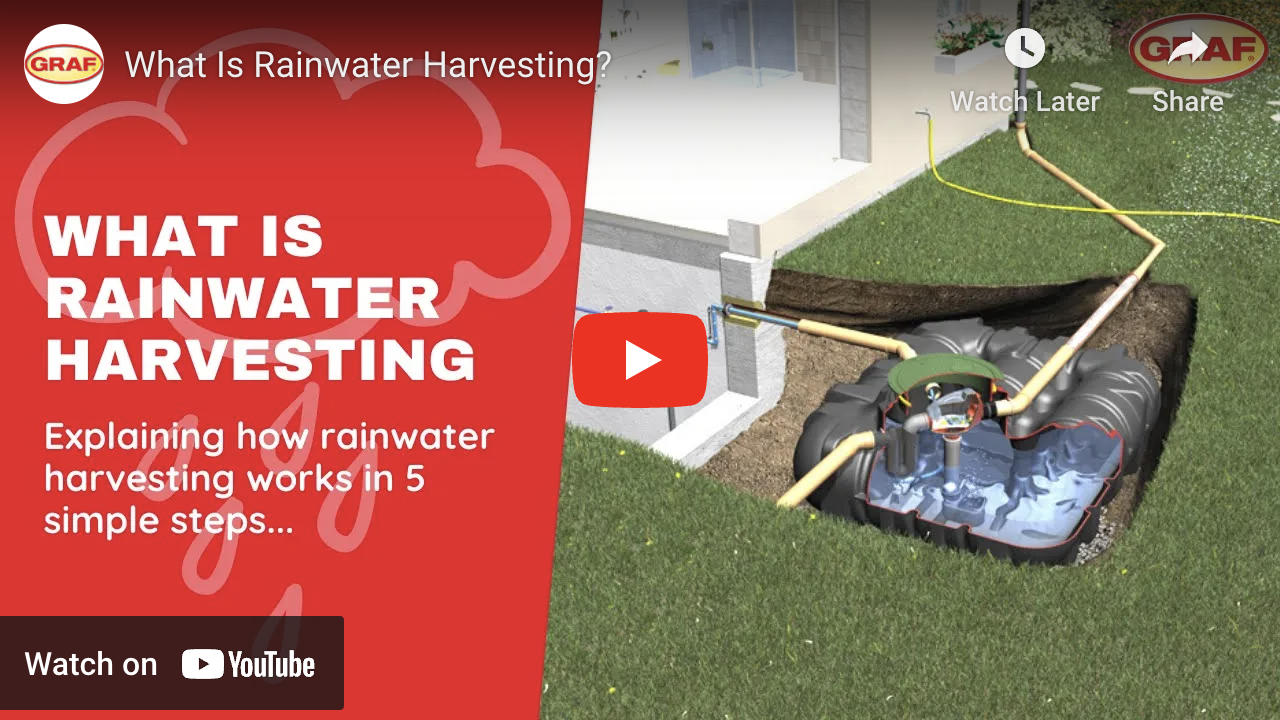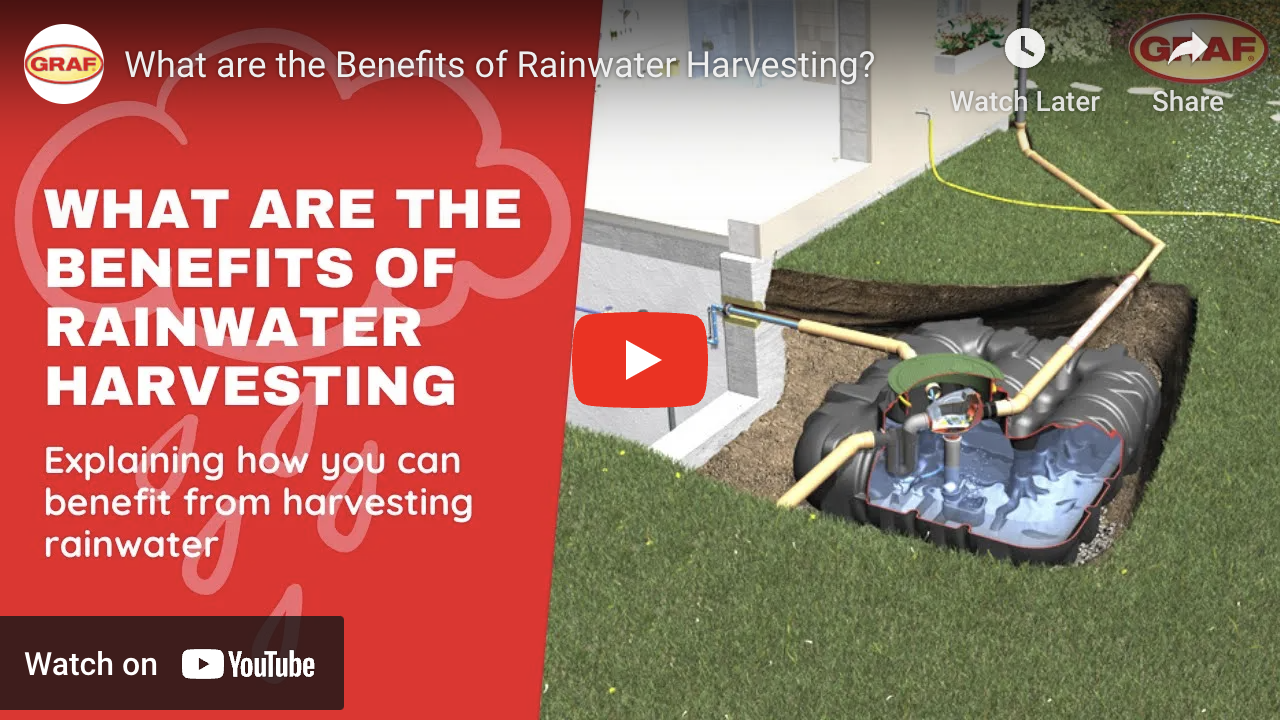There are several factors you’ll need to consider when installing your water tank to make sure it’s safe. Decide what exactly you want to use your harvested rainwater for, and think carefully about when it’ll be placed (it’s difficult to move afterwards). GRAF has lots of tanks available for every household’s needs and usage. Read on to find out more about installation.
What Will You Use Your Rainwater For?
Rainwater can be used for lots of different tanks in and around your home without the need to be treated. Here are some common uses of rainwater:
- Rainwater harvesting
- Garden and lawn watering
- House appliances
- Swimming pool
- Livestock
How Does A Rainwater Harvesting System Work?
It’s not just commercial and industrial organisations that can capture rainwater for reuse. There are also easy-to-use and install options for domestic properties, like our GRAF rainwater harvesting system.
This simple system captures rainwater at roof level and safely directs it into an underground harvesting tank through the downpipes. Using the integrated filter, the water is processed and moves through the distilling well into the tank.
A floating suction hose is used to draw the water from just below the surface – where it is at its cleanest – and finally directed into the property and used until the tank is empty.
There are four main components to every rainwater harvesting system:
- Underground tank
- Tank cover
- Filter package
- Pump package
Installation
All of GRAF’s products come with a detailed step-by-step guide on how to install as this will vary greatly depending on the size of tank you buy. But, here is a general guide:
With the installation of the tank, we would normally advise a specialist groundworker to help you with the installation of the underground tank. With way more tasks than you to take into consideration, there are three fields of expertise required to install the tank correctly.
Firstly, we have the groundwork stage. We have an electrician connect up the submersible pump. Then, we have a plumber to connect up the pipework if the rainwater is coming back internally to the property.
- Excavate the area for the tank installation. Follow any guidelines related to slopes and groundwater levels.
- Lower the tank into the trench ensuring it is aligned horizontally.
- Carefully attach the tank turret to the top of the tank.
- Install the filter package before connecting the roof downpipes along with the overflow u-bend. Aim for a minimum decline of at least 1% in the same direction as the flow.
- Using gravel or similar, backfill the excavated space in layers of 30cm while raising the water level at the same time.
- Before the backfilling is complete, install the dome shaft, which can be adjusted to fit flush with ground level once the hole has been filled.
- Connect the underground tank to the house with a pipe. This will be managed by the control panel inside the property where the entire system operates from.
- Install the control panel in a nearby area such as the garage or utility room and connect it to the external piping linked to the tank.
- Lastly, ensure all rainwater pipes have the appropriate markings to identify those which are not used for drinking water.
A quote from Ian, a GRAF customer says “Graf’s system is much the same in a few easy kit form bits and is, in our opinion, now one of the best on the market. Graf staff are all pleasant and ready to help after a question is raised on-site by the plumber or whoever needed guidance or could not follow the instructions due to circumstances on site. They were always ready to help.’’
At GRAF, we will always help and assist you in any way we can to ensure your water tank is safe and ready for use within days. The delivery of your tank will be delivered by highly trained drivers and we will discuss how to offload your tank too.
If further guidance is needed, we can send a rep or an engineer to sites to advise on the installation and give guidance on how the system should be installed. We also have a helpline over the phone should any immediate questions need to be answered.
In summary,
- Determine Your Rainwater Harvesting Potential. The rainwater harvesting potential is the amount of rainfall that could be collected in the given area.
- Determining the Layout.
- Set up the Storage
- Decide on the Features in the System
- Install the Pipes and Tank.


